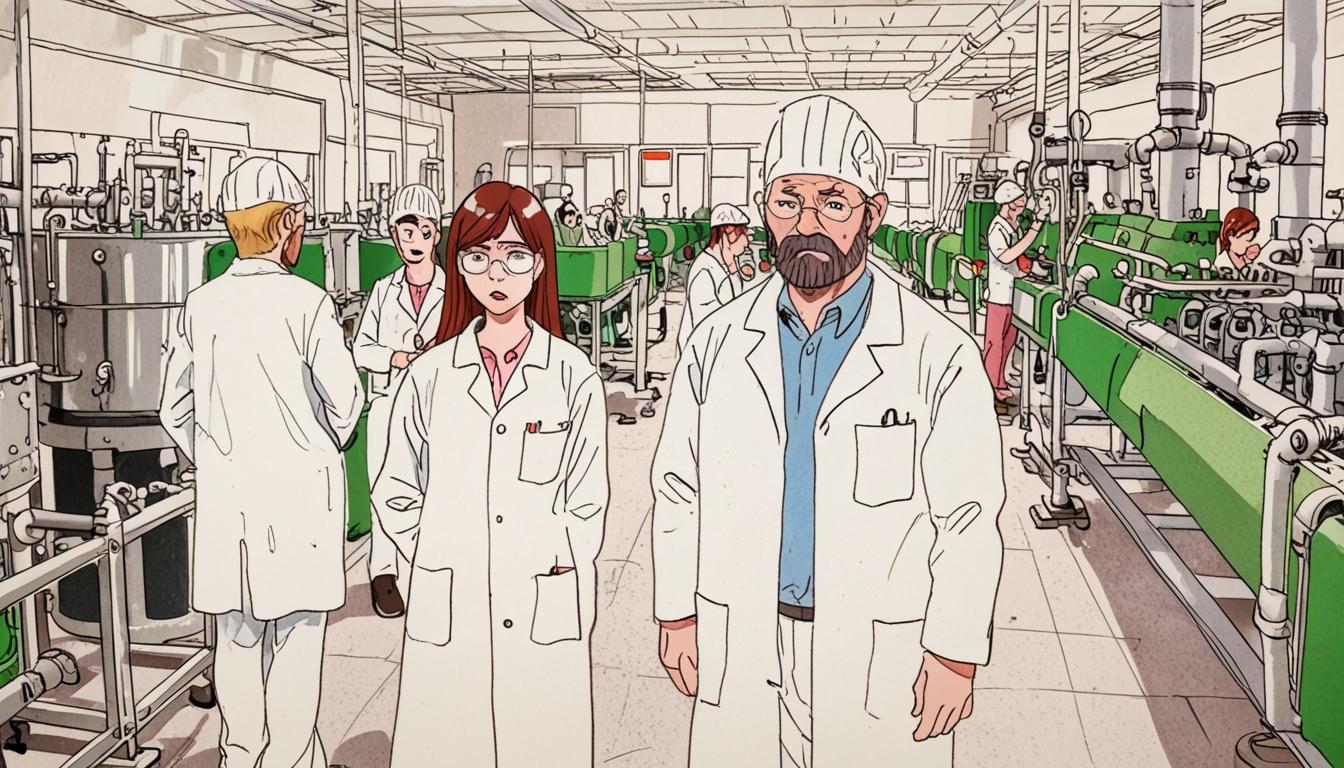U.S. President Donald Trump’s attitude towards international trade, particularly regarding Ireland, is causing unease in key sectors of the Irish economy as the 2 April deadline for potential tariffs approaches. The Irish real estate market, especially in the realms of life sciences, industrial, and office sectors, is poised to feel the impact should these tariffs be implemented.
Recent statistics reveal a notable surge in exports from Ireland to the U.S., with figures reaching almost €12 billion in January alone, an increase of over 80% compared to the same month in 2024. This surge is believed to be linked to pharmaceutical companies like Eli Lilly, which produces the weight loss drug Zepbound in Cork. During a meeting with Taoiseach Micheál Martin in March, Trump expressed concern about the significant trade imbalance, stating, "Ireland has the entire U.S. pharmaceutical industry in its grasp."
As the implementation date of the tariffs approaches, there is growing apprehension about the potential economic effects. Should these tariffs take effect, analysts predict detrimental outcomes for the Irish economy, particularly affecting sectors geared towards life sciences and logistics. Grant Thornton partner Martin Shanahan articulated concerns in an impact report, noting, "From an Irish perspective, the state’s biggest exposure is likely the pharmaceutical sector."
Speculation is rife that some industry leaders have been alerted to a potential policy shift, prompting discussions about relocating manufacturing to the U.S. Ireland's prominence as a global pharmaceutical hub means that any changes in trade policy could significantly disrupt supply chains, deter investments, and affect job creation.
In 2022, Ireland's exports of goods to the United States were valued at €72.6 billion, while imports were €22.5 billion, resulting in a substantial trade surplus of over €50 billion. This places Ireland fourth in the list of countries with which the U.S. has a trade deficit, behind China, Mexico, and Vietnam, having overtaken Germany and Japan.
A report by the Economic and Social Research Institute estimates that the imposition of tariffs could result in an economic hit to Ireland exceeding €18 billion in lost trade. If the U.S. were to impose 25% tariffs on all EU exports, it could lead Irish GDP to decline by 3.7% over the next five to seven years compared to a situation without tariffs. The potential fallout is amplified by concerns that tariffs of 10% could depress GDP and modified domestic demand by up to 3.2% and 1.7%, respectively.
Paul Egan, a co-author of the study, emphasized the far-reaching consequences, stating, "Protectionist policies would have a disproportionate impact on the traded sector in Ireland" and warned of implications for the labour market and domestic consumption.
Historically, Ireland has attracted foreign investment since the 1950s, with the establishment of the world's first free trade zone near Shannon Airport in 1959. Low corporation tax rates have played a crucial role in luring U.S. companies, significantly contributing to the Celtic Tiger economy of the early 2000s.
While uncertainty looms over the tariff situation, some investors maintain that the robust economic relationship between the U.S. and Ireland may mitigate adverse effects. Colin MacDonald, CEO of Fine Grain Property, remarked on the strong demand for commercial space, asserting, "U.S. businesses thrive in Ireland," and highlighting the reciprocal nature of the economic ties.
The industrial and logistics sectors seem particularly at risk, especially facilities focused on U.S. imports and exports. Craig Maguire, BNP Paribas Real Estate’s Pan-European Logistics and Industrial Leader, noted that while the sector has shown signs of stabilisation, the potential for tariffs introduces an unpredictable element: “It is very early to assess the likely impact of tariffs [across Europe] and whether they are short-term or long-term.”
Though the immediate future remains uncertain, the presence of major American corporations in Ireland, including tech giants and leading pharmaceutical firms, underscores the importance of this economic relationship as the situation develops further.
Source: Noah Wire Services
